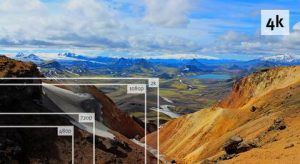 In late June, Intelsat and Ericsson successfully demonstrated a true 4K Ultra High Definition (UHD), end-to-end video transmission over satellite – a first for North America. The demonstration is proof that the satellite delivery chain is able and ready for the next-generation signals.
In late June, Intelsat and Ericsson successfully demonstrated a true 4K Ultra High Definition (UHD), end-to-end video transmission over satellite – a first for North America. The demonstration is proof that the satellite delivery chain is able and ready for the next-generation signals.
The question is when broadcasters will be ready to offer 4K. Addressing this leads to the issue of demand: Do viewers want 4k? Why would they want it? Some viewers have just moved from SD to HD; is there real motive to consider 4K?
To start, 4K offers richer, deeper colours than HD and enables the immersive experience, says Peter Ostapiuk, Vice-President of Media Product Management at Intelsat.
“Compared to current HD in terms of resolution, 4K is equivalent to four times the current 1080p version of HD resolution. This is what you typically see with Blu-ray. The majority of what you see for linear TV is 1080i or 720p, which is lower resolution. The higher resolution enables the immersive experience. All the pixilation that you can see today up close disappears and colors are richer and deeper than current HD programming.
“We believe 4K will enable a new premium tier of programming made available by selected large programmers. Not everything will be in 4K in the short term. That is part cost-related and part customer-driven. Some content, such as news channels will not work well in 4K. Having said that, because we don’t think the transition from HD to 4K will be en mass there will be more demand for managed services. Rather than just buying a transponders, customers will want an entire transmission chain. We believe our fibre network will be applicable to 4K. In many instances, delivery of 4K will be over satellite as well as over fibre, and Intelsat’s network is prepared to do both.”
A factor affecting 4K’s coming of age is content, says Ostapiuk. More challenges are posed by production set-top boxes and the rollout of high-efficiency video coding (HEVC).
“It all starts with content. With 3D, lack of content was a big barrier. Broadcasters are viewing 4K as more compelling, and customers generally like it better as well. If you rewind to three or four years ago, Direct-to-home (DTH) operators were the first to offer a 3D signal, and we expect them to be first to offer 4K. That’s great news for us, as they will need bandwidth for distribution. But this all comes back to simple fact that without compelling, high-quality content, this will be very hard to get going.
“The point of the demonstration was to prove that the satellite transponders as they are today are ready to accommodate the bandwidth necessary to transmit 4K over satellite. When HD rolled out, the only difference from SD was the higher resolution of the picture. We were just increasing the bitrate per channel due to resolution. We strongly believe the 4K rollout is connected to the rollout of HEVC or H.265 in order to make it cost-effective. We will need to use a higher order modulation like 16 APSK. There are also no existing production set-top boxes that could decode the 4K signal distributed over the DTH or cable platform. The current version of HDMI cables also could not support P60 4K delivery, so it remains to be seen if P60 or P30 will become the standard. The cost of the TV also is a concern.”
For the demonstration, the transmission was received by Turner Broadcasting’s facilities in Atlanta in the US. Intelsat’s Galaxy 13 satellite delivered a 4:2:2 10-bit, 4K UHD signal at 60 frames per second. Ericsson encoded and decoded the 100-Mbps video feed in real time using its AVP 2000 contribution encoders and RX8200 receivers. Newtec provided the modulation and demodulation hardware, featuring Clean Channel Technology, while the satellite downlink antenna was provided by Turner Broadcasting.
The outcome was remarkable, says Ostapiuk, adding that the depth of the image made it very life-like. In addition to overcoming the challenges associated with the rollout of 4K, the industry still needs to be patient, he says.
“It was in P60 format, which really smoothes out any motion blurs in video such as sports, which has a lot of fast motion. One of the speakers described it as like looking out of your window and seeing that reality on your TV screen. You can almost see at 3D depth without glasses. It’s not a true 3D, but when you look at very high quality 4K, it has a depth to it.
“The transition from SD to HD took almost 10 years, and in some segments, SD is still going strong. We still transmit a lot of SD channels over our satellites. It will take time, and we have to be patient in order to have all the pieces of the technology as well as develop business cases to make sure that this is not just a technological adventure.”














Add Comment